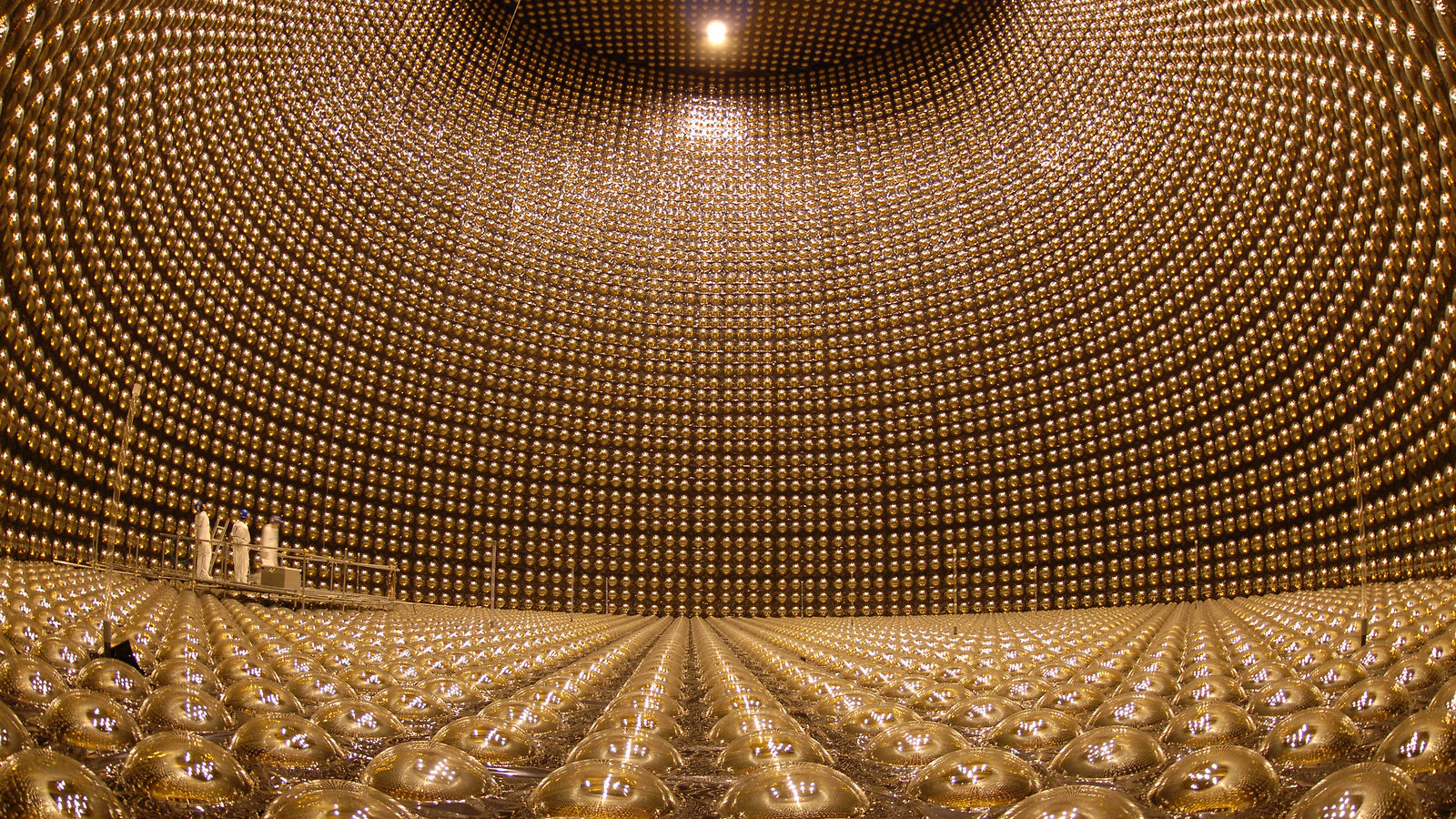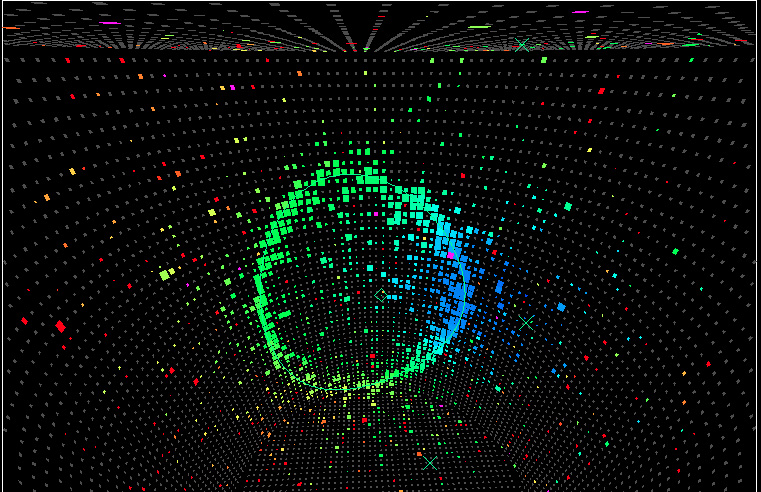Physicists have long suspected that strange little particles called neutrinos, which come in three types, can morph from one type into another. They’ve studied beams made up of one type of neutrinos and discovered that they seem to disappear as they travel.
Now, for the first time, a neutrino experiment has observed conclusively the other side of this process: the appearance of a different type of neutrino in one of those beams.
Physicists on the T2K experiment (pictured above) discovered electron neutrinos in a beam of muon neutrinos they sent 185 miles from the east coast to the west coast of Japan.
“This result constitutes the main motivation for constructing the T2K experiment and has been one of the main goals of neutrino physics for the past decade,” says T2K physicist Michael Wilking of TRIUMF laboratory in Canada, who presented today’s result at the European Physical Society meeting in Stockholm.
It’s as if each neutrino is a ball that has the innate ability to be a baseball, a basketball or a football. It chooses which one to be only when it's caught. Scientists have made machines that pitch tons of these balls in the form of baseballs across long distances. They then catch the balls and study them.
What they had seen up until this point was that not all of the baseballs they were pitching made it to the catcher. This gave them some evidence that the balls were changing types. Now not only have T2K scientists seen baseballs disappearing but they also have caught a significant number of basketballs on the other side.
T2K scientists showed the first evidence of the appearance of electron neutrinos in a muon neutrino beam in 2011. Since then, they have collected new data and improved their analysis techniques enough to declare a discovery. The probability that random statistical fluctuations would produce this result is less than one in a trillion.
Scientists’ confirmed ability to observe neutrinos morphing from one type to another is good news for scientists who hope to learn what role neutrinos played in shaping the early universe.
The big bang should have created equal amounts of matter and antimatter particles. But something seems to have upset the balance, leaving us with a universe of matter and very little antimatter, the reason we exist.
This could be explained if nature treats matter differently than antimatter. Scientists have already found that this occurs in quarks, but it doesn’t happen the right amount to explain how little antimatter and how much matter exist now. The rest of the explanation could start with neutrinos.
Scientists at T2K and Fermilab’s NOvA experiment, currently under construction, hope to make strides in comparing the probability that neutrinos of different types will oscillate to the probability that antineutrinos of different types will oscillate. But it may take later generations of neutrino experiments, such as the Long Baseline Neutrino Experiment in the US or the Hyper-Kamiokande experiment in Japan, to find an answer.
Scientists on the T2K experiment, for their part, plan to collect 10 times more data in the coming years.
Ashley WennersHerron contributed additional reporting to this article.




